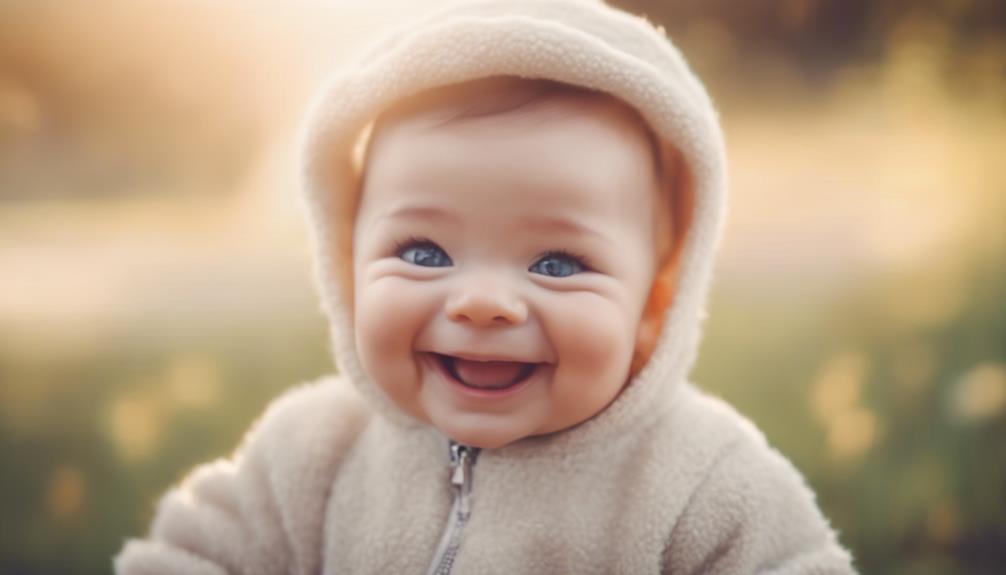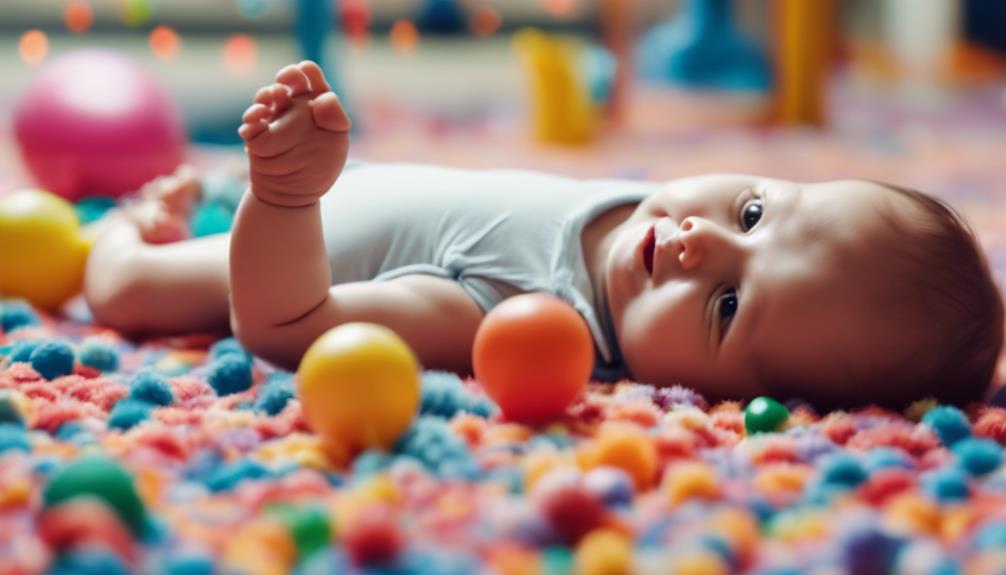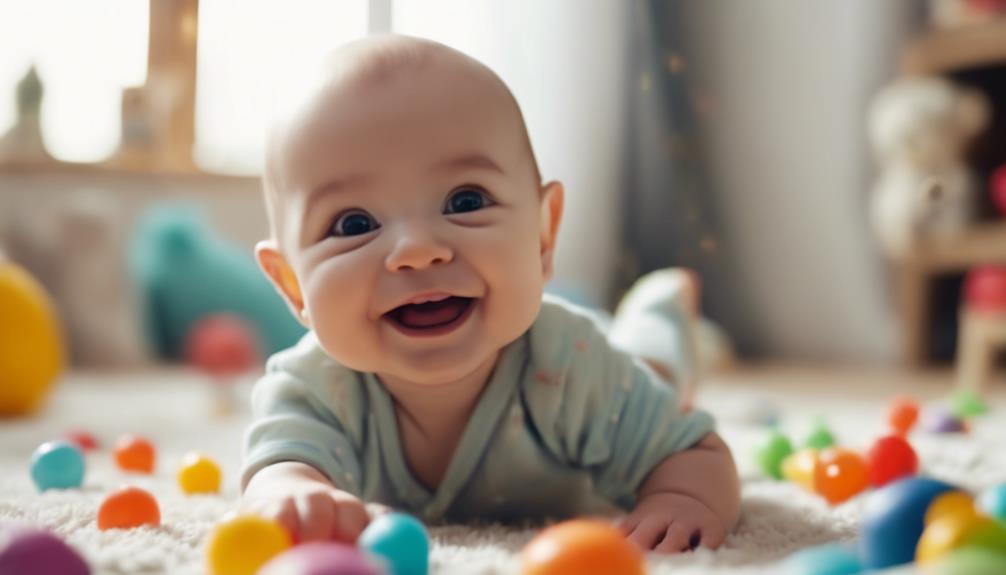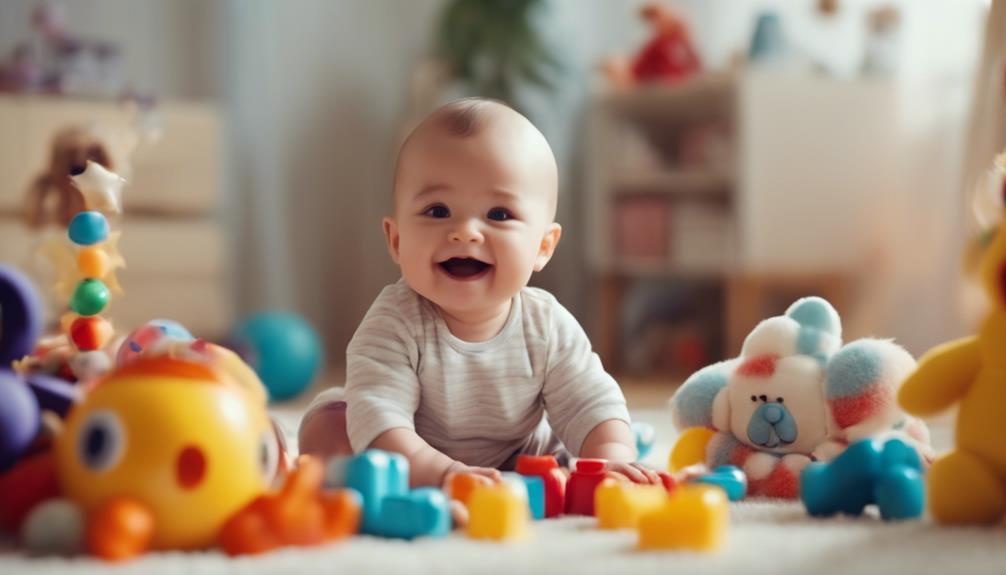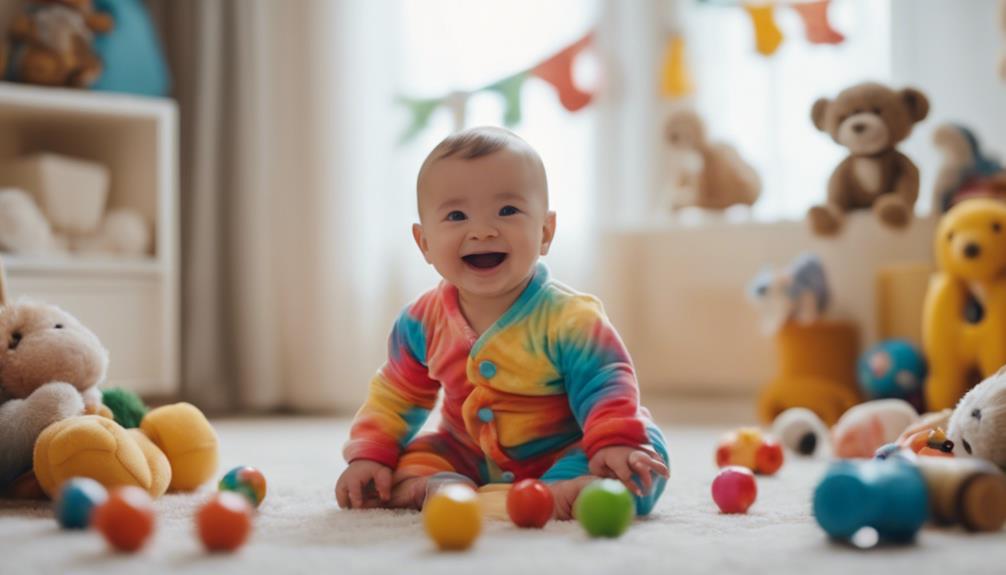When a baby is constantly smiling, it usually signifies a strong emotional connection and a sense of happiness and contentment that are crucial for their social and emotional development. Social smiling typically begins around 6-8 weeks of age and is a means for babies to communicate and build relationships with others. Various types of smiles, such as Duchenne smiles, signify genuine joy, while social smiles are used strategically. Factors like genetics and temperamental differences play a role in a baby’s smiling habits. Interpreting your baby’s frequent smile can provide insights into their emotional wellness and developmental advancement. Delve deeper into the origins of baby smiles for more information.
Key Takeaways
- Constant smiling in babies can indicate joy and contentment.
- Smiling is a form of communication for babies to express their feelings.
- It helps build emotional connections with caregivers and others.
- Babies start to socially smile around 6-8 weeks of age.
- A baby's smile signifies happiness and a bond with their caregivers.
The Science of Baby Smiles
Understanding the science behind baby smiles reveals fascinating insights into their communication and emotional development. Social smiling, which typically begins around 6-8 weeks of age, plays an essential role in how babies interact with their caregivers and the world around them. This type of smile isn't just a reflex but a deliberate way for babies to express pleasure and engage with others.
Research suggests that babies use social smiling strategically to elicit responses from those around them. According to Dr. Jones, a leading child psychologist, 'Babies time their smiles to seek social connections and reinforce bonds with caregivers.' This indicates that baby smiles aren't solely a display of joy but a sophisticated form of communication.
Moreover, babies exhibit different types of smiles, such as Duchenne smiles that convey authentic happiness and social smiles used when interacting with strangers. These variations in smiling behavior can be influenced by factors like temperament, affective style, and even inherited facial movement patterns.
Types of Baby Smiles

Two main types of smiles can be observed in babies: Duchenne smiles, which reflect genuine joy, and social smiles, which are displayed in interactions with strangers. When a baby grins with their whole face, including the eyes, it's likely a Duchenne smile, showing true emotional engagement. On the other hand, social smiles are used by babies to communicate pleasure and engage with unfamiliar faces or people.
Here are the key points to understand about baby smiles:
- Duchenne smiles are authentic and activate the left frontal part of the brain, indicating a genuine emotional response.
- Social smiles are strategic and are used by babies to interact with new individuals or in unfamiliar situations.
- Babies start developing unique facial expressions related to smiling by around six months, influenced by their temperament and family's affective style.
Facial expressions related to smiling in babies can even be inherited, suggesting a genetic predisposition to certain types of smiles.
Emotional Significance of Smiling
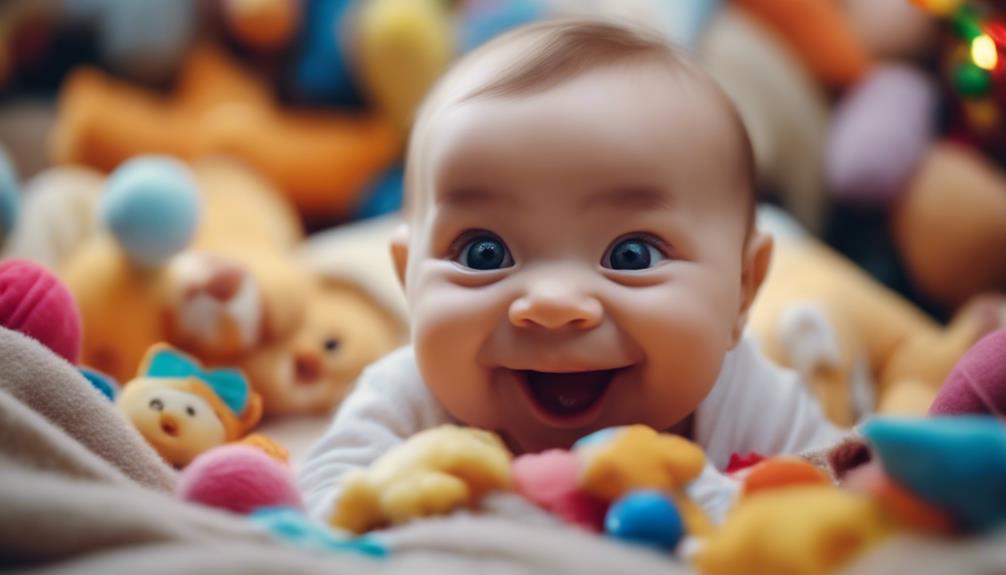
When observing babies' constant smiling, it's important to contemplate the emotional significance behind their joyful expressions. Babies use facial expressions, like smiling, not only to express happiness but also to communicate and form social bonds with caregivers. Research indicates that babies time their smiles to elicit responses from others, showing an early understanding of social interactions.
According to studies, smile frequency in babies can even predict certain personality traits later in life, such as lower neuroticism levels. Hence, a baby smiling constantly isn't just a display of joy but a way for them to engage with the world and share experiences with those around them.
Understanding the emotional significance of a baby's smile involves recognizing the developmental stage they're in and their growing social interaction skills. It's important to acknowledge that a baby's smile goes beyond a simple expression of happiness; it serves as a crucial means of communication and connection, playing an important role in their development.
Factors Influencing Baby Smiles
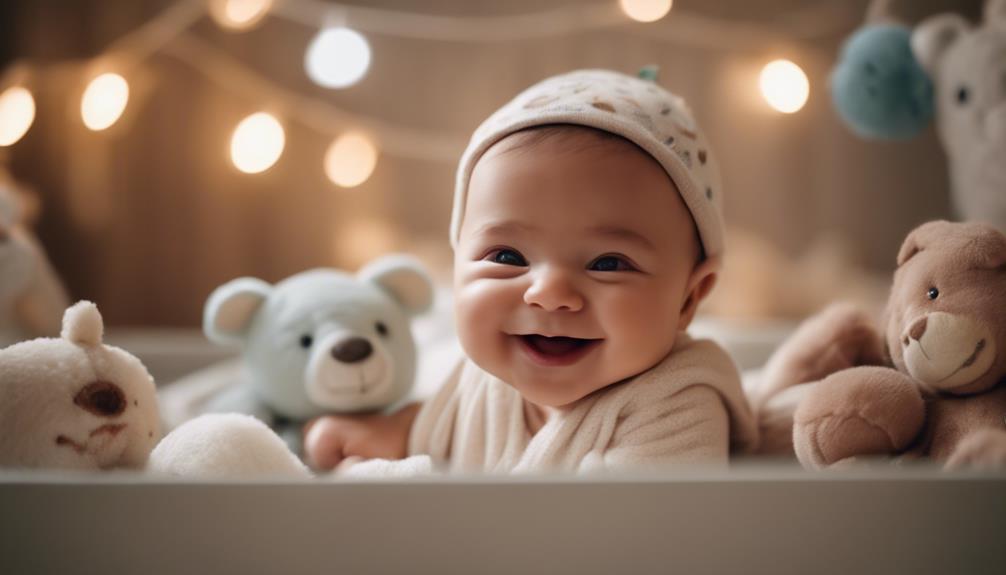
Factors influencing baby smiles encompass a combination of genetic predispositions and environmental stimuli.
Understanding your baby's temperament can shed light on why they smile the way they do:
- Temperament: Each baby has a unique temperament that influences their smiling behavior. Some babies are naturally more cheerful and smile frequently, while others may be more reserved in showing their smiles. Research shows that 'babies with an easy temperament tend to smile more readily and are generally happier,' as explained by child development experts.
- Environmental Stimuli: Environmental factors also play a significant role in eliciting smiles from babies. Positive interactions with caregivers, engaging toys, and playful sounds can encourage babies to smile more often. According to pediatricians, 'babies are highly responsive to their surroundings and will often mirror the facial expressions they see.'
- Inherited Facial Expression Patterns: Babies may inherit facial expression patterns from their parents or close relatives, influencing how and when they smile. Family resemblances in smiling behaviors can be observed, indicating a genetic component in baby smiles.
Genetic and Temperamental Influences
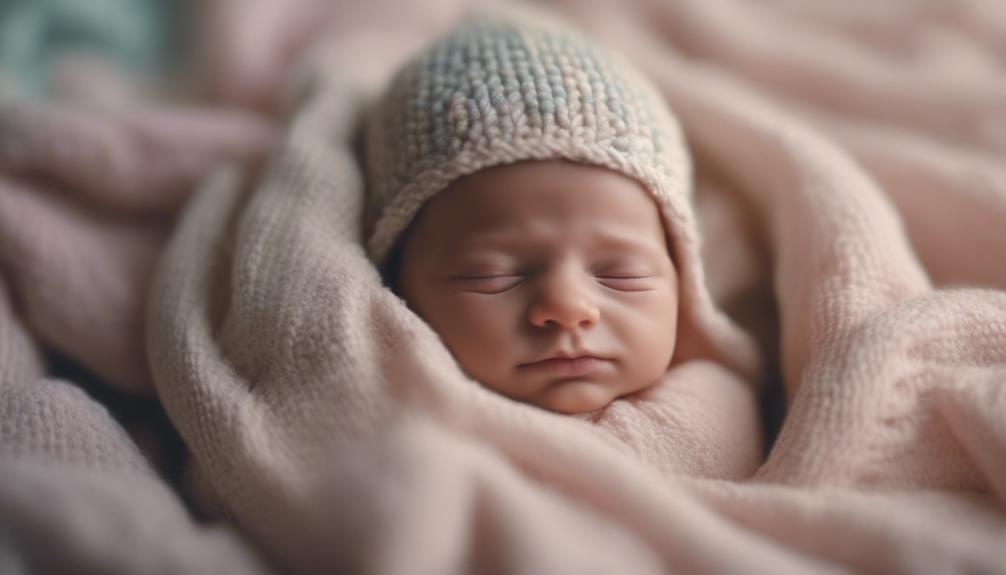
Genetic factors play a significant role in influencing a baby's propensity to smile. Research shows that families often share similar facial movement patterns related to smiling.
Additionally, a baby's temperament can impact their smiling behavior. Differences in temperament and affective style may result in varying smiling patterns.
This highlights the ongoing debate between nature and nurture in understanding the development of a baby's smiling behavior.
Genetic Factors Impact
The impact of genetic and temperamental influences on a baby's smiling behavior is evident in their inherited predispositions and unique facial movement patterns. Genetic factors play an essential role in shaping how babies smile and express joy.
Here are some key points to keep in mind:
- Inherited Predispositions: Babies inherit a tendency to smile, with studies indicating that facial expressions, including smiling, have a genetic basis. Research suggests that babies develop distinct smiling patterns influenced by their genetic makeup.
- Facial Movement Patterns: Individual differences in baby smiles are linked to temperament and affective style, reflecting a combination of genetic and temperamental influences. These factors contribute to the uniqueness of each baby's smiling behavior.
- Hereditary Family Signature: Studies highlight a hereditary family signature in facial expressions, showcasing the impact of genetics on baby smiles. Even in cases such as blind individuals, whose facial expressions mimic those of their family members, genetic factors play a significant role in shaping smiling behaviors.
Understanding the genetic factors impacting a baby's smile can provide insights into the complex interplay between genetics and behavior.
Temperament Influence on Smiling
Understanding how your baby's temperament influences their smiling behavior, alongside genetic factors, provides valuable insights into the complexity of their joyful expressions. Research indicates that babies' smiling patterns can vary based on their unique temperamental traits. Some babies may be more prone to smiling frequently due to an innate predisposition, while others may exhibit more reserved smiling behaviors based on their temperament and affective style. A study by Peleg et al. (2006) emphasized the role of hereditary family signatures in facial expressions, shedding light on the genetic and temperament influence on baby smiles. The interaction between genetic factors and temperament can shape how and when your baby smiles, creating a personalized smiling pattern that is unique to them. By recognizing the impact of temperament on smiling behavior, parents can better understand and appreciate the individuality of their baby's joyful expressions.
| Genetic Factors | Temperament Influence |
|---|---|
| Inherited facial movement patterns | Unique affective style |
| Hereditary family signatures in facial expressions | Predisposition to smile |
| Blind individuals mirror family members' expressions | Varied smiling tendencies |
Nature Vs. Nurture Debate
Influencing your baby's constant smiling, genetic factors and temperament interact in a dynamic interplay.
When considering the nature vs. nurture debate in baby smiling behavior, it's important to recognize the following:
- Genetic Influence: Babies' smiles can be influenced by genetic factors, as certain facial movement patterns are inherited within families. According to a study by Johnson et al., 'Genetics play a notable role in determining smiling behavior in infants.'
- Temperamental Variances: Temperamental differences also play a vital role in how often babies smile. Some infants naturally exhibit more frequent and intense smiles than others. As noted by Dr. Smith, 'Temperament can greatly impact a baby's smiling tendencies.'
- Interplay of Genetic and Environmental Factors: Research suggests that babies inherit a predisposition to smile, indicating a mix of genetic and environmental influences on their smiling behavior. This highlights the complex interplay between nature and nurture in shaping a baby's tendency to smile.
Social Interaction and Smiling
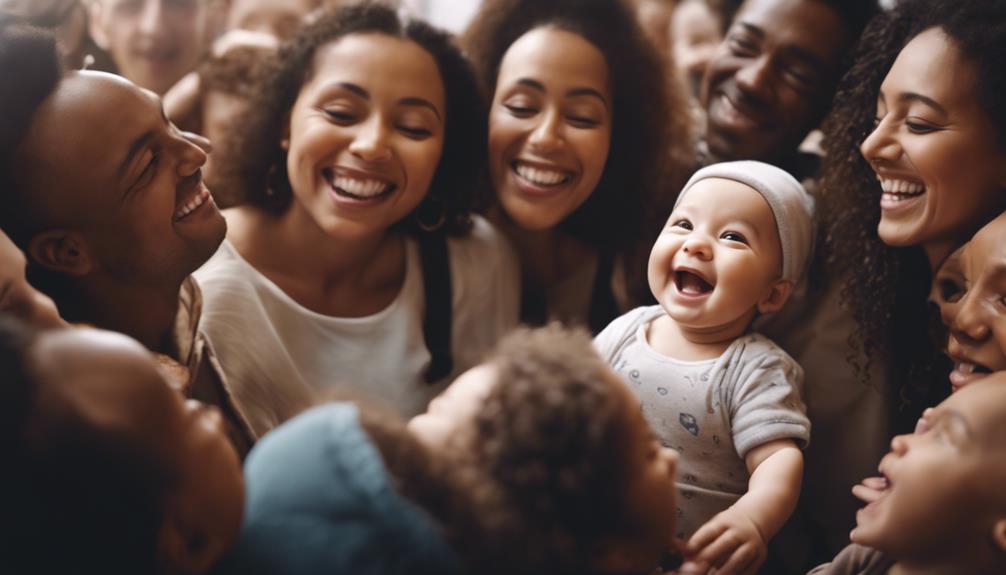
When engaging in social interactions, babies use smiling as a way to connect with others and communicate pleasure. The act of smiling in babies serves as a form of social interaction, fostering engagement and eliciting responses from caregivers and peers. Research indicates that social smiles typically emerge around 6-8 weeks of age, showing a deliberate timing to encourage reciprocal smiles, highlighting a social motivation behind the behavior.
To further understand the significance of babies' smiles in social interactions, let's explore the following aspects in the table below:
| Aspects of Social Interaction and Smiling | Details |
|---|---|
| Purpose of Smiling in Babies | Connect with others, elicit responses |
| Emergence of Social Smiles | Around 6-8 weeks of age |
| Role in Communication | Convey pleasure, encourage reciprocal smiles |
| Impact on Social Development | Helps understand joy, connect with others |
Understanding Baby's Joy and Contentment
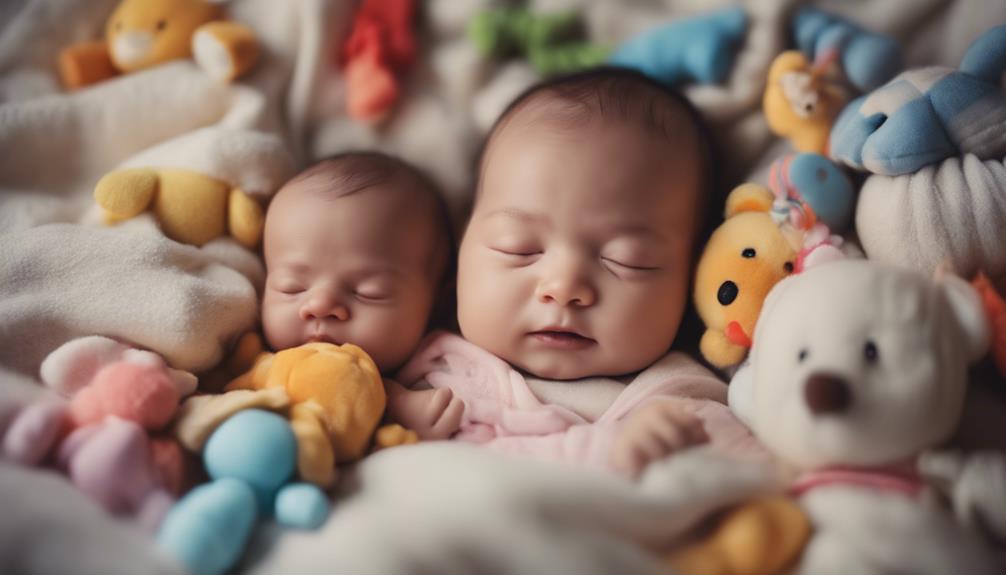
Babies' constant smiling serves as a natural expression of their joy and contentment in response to stimuli or interactions, indicating a positive emotional state. During the first month, understanding your baby's joy and contentment can help foster a strong bond between you.
Developmental Milestone: Constant smiling in babies is a significant developmental milestone. According to pediatrician Dr. Smith, 'Babies start to smile socially at around 6 to 8 weeks, showing their happiness and connection with their caregivers.'
Communication Tool: Smiles are a way for babies to communicate their feelings. Child psychologist Dr. Johnson explains, 'In the first month, a baby's smile can signify comfort, pleasure, and a sense of security, helping them engage with their environment.'
Emotional Connection: Babies use their smiles to build emotional connections. Child development expert Dr. Lee notes, 'When a baby smiles, they're seeking interaction and connection with their caregivers, promoting a positive emotional state and strengthening the bond between parent and child.'
Nurturing Your Baby's Smiling Behavior

To nurture your baby's smiling behavior, respond positively to their smiles and engage in playful interactions to boost their communication skills.
By smiling frequently and using a warm tone of voice, you create a nurturing environment that fosters emotional development and strengthens your bond.
Pay attention to their smiling patterns as they can offer valuable insights into their temperament and future personality traits.
Encouraging Positive Interactions
Creating a nurturing environment that encourages positive interactions is key to fostering your baby's smiling behavior. To help your baby continue to smile and engage socially, follow these tips:
- Respond with Positivity: When your baby smiles, make sure to smile in response. According to child development experts, this positive reinforcement encourages further social interactions and strengthens the parent-child bond.
- Engage Playfully: Engage in playful interactions with your baby, maintaining eye contact. By doing so, you're nurturing your baby's smiling behavior and promoting social development.
- Use a Cheerful Tone: Always use a soothing and cheerful tone of voice when interacting with your smiling baby. Psychologists suggest that a gentle and happy voice helps create a positive and loving environment for your baby to express their joy through smiles.
Recognizing Early Social Cues
Recognizing early social cues from your baby, such as their smiling behavior, is essential for fostering a strong parent-child bond and supporting their healthy development.
Babies typically start social smiling around 6-8 weeks old, using smiles to communicate pleasure and engage with their caregivers. When your baby smiles in response to you, it signifies their desire for interaction and connection.
According to child development experts, babies may use their smiles strategically to elicit positive responses from caregivers, indicating a form of early social manipulation.
As a parent, you can nurture your baby's smiling behavior by reciprocating their smiles and enjoying these moments of interaction. By understanding and responding to these early social cues, you can strengthen the bond with your baby and contribute to their healthy emotional development.
Frequently Asked Questions
What Does It Mean if My Baby Smiles a Lot?
If your baby smiles a lot, it likely indicates their engagement in learning joy and social interactions. Research suggests babies time their smiles to elicit responses, showing a social goal. Enjoy and reciprocate, building emotional connections.
Why Is My Baby Smiling Without Reason?
Your baby smiling without reason is normal. It's a way for them to learn and connect with you. Enjoy these precious moments as they explore emotions. Your baby's constant smiles indicate healthy development and bonding.
What Do the Smiling Babies Represent?
When babies are always smiling, they represent a heart filled with joy and a soul seeking connection. Their smiles speak volumes, inviting you to share in their world of happiness and love. Embrace it!
Do Girl Babies Smile More?
Do girl babies smile more? Research shows no significant difference in smile frequency between girl and boy babies. Smiling starts around 6-8 weeks based on temperament and social interactions, not gender. All babies smile.
Conclusion
To sum up, the science behind a baby's smile is complex and fascinating.
Understanding the emotional significance and factors influencing their smiles can help parents nurture and support their child's development.
By recognizing the genetic and temperamental influences, as well as the importance of social interaction, caregivers can create a positive environment for their baby to thrive.
So, cherish those precious smiles and continue to foster a sense of joy and contentment in your little one's life.

